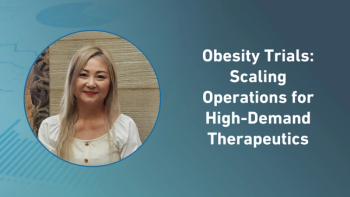
European Medicines Agency provides guidance on selecting study participants and assessing effectiveness of new autism treatments
Today, the researchers of EU-AIMS – the world’s largest multi-center study of potential autism medicines – announced they have forged an agreement with the European Medicines Agency on procedures for selecting study participants and assessing the effectiveness of new treatments.
EU-AIMS stands for European Autism Interventions – A Multicentre Study for Developing New Medications. As a founding member of EU-AIMS, Autism Speaks has contributed expertise to all its work programs, which are dedicated to speeding the development of safe and effective medicines for autism.
The European Medicines Agency is the European equivalent of the U.S. Food and Drug Administration. It is the regulatory agency that must approve any new medicine being brought to market in the European Union. The agency’s support marks a major milestone in planning and launching future clinical trials, the study authors write in a special correspondence published in Nature Reviews Drug Discovery
“We now recognize the enormous diversity among people with autism spectrum conditions,” says Eva Loth, EU-AIMS project science coordinator and deputy lead clinical researcher. “We need to move away from the idea of a one-size-fits all treatment for autism. We believe that it will be more fruitful to develop treatments – medical and non-medical – for different persons with autism depending on their specific needs. To do this, it is vital to have clearly defined biomarkers, or biological measures, to identify subtypes of autism and match them with the treatments most likely to provide benefit.” Dr. Loth pursues research at the Sackler Institute for Translational Neurodevelopment, at King’s College London.
The EU-AIMS Longitudinal European Autism Project (LEAP) is combining genetic testing, neuroimaging, cognitive testing and clinical assessments to identify biological risk markers associated with subtypes of autism. It will enroll some 400 children and adults with autism and 300 children with typical development or mild intellectual impairment in studies across seven European universities. As the largest such study of its kind, it will be the first to provide researchers with the ability to identify autism subgroups that may respond best to different treatments.
At the beginning of the project, the EU-AIMS researchers approached the European Medicines Agency to ensure that the regulators would accept the biomarkers identified in its study. In their Nature correspondence, the LEAP team announce that the agency supported their proposed criteria for the selection of study participants and the types of symptom improvements that should be used to measure benefit and also agreed upon the methods used to identify biomarkers to help distinguish distinct subtypes of autism.
“It's critical for researchers to engage with the drug regulators early on, to figure out exactly what will be required to prove that a treatment is safe and effective for persons with autism,” says Autism Speaks Vice President for Medical Research Paul Wang. “The new publication shows how the EU-AIMS group has succeeded in starting this dialogue, and it represents a key step toward translating autism science into autism treatment.”
Inclusive enrollment
For example, the European Medical Agency supported the inclusion of study participants who have autism complicated by co-occurring conditions such as attention deficit hyperactivity disorder, anxiety and depression. Up to 70 percent of children and adults with autism have one or more mental health conditions, the LEAP researchers note. As such it’s vital to include them in clinical studies.
Similarly, the agency supported plans to include people with autism and intellectual disability. Intellectual disability affects an estimated 55 percent of those with autism. It is especially common among those most severely affected by autism and, so, may be in the greatest need of medical treatment.
Biomarkers to identify subgroups
The regulatory agency also agreed on the importance of further study of LEAP’s proposed biomarkers for autism. These include the results of brain-imaging tests that can track brain activity and connectivity, eye-tracking studies that measure attention to social cues and analysis of biological samples such as blood, saliva and urine. Biological samples are particularly important for identifying genetic risk factors that may contribute to some forms of autism.
“Basic science is now at the brink of being able to identify molecular mechanisms and to translate them into effective therapeutic targets for treatment of individuals with ASD,” the researchers write. “Validation and qualification of ASD biomarkers will be key to giving industry the confidence to carry out the costly, large-scale clinical trials needed to assess the efficiency and mechanism of therapeutic interventions, delineate the patient populations that will benefit from them, and facility the regulatory approval of new therapies.”
“
Newsletter
Stay current in clinical research with Applied Clinical Trials, providing expert insights, regulatory updates, and practical strategies for successful clinical trial design and execution.





.png)



.png)



.png)
.png)
